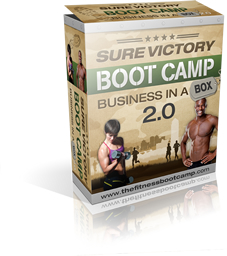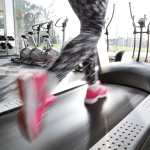 The following post was writing by Dr. David Smithson, Birmingham bioidentical hormone doctor. Dr. Smithson is part of the BodyLogicMD national network of bioidentical hormone doctors, who use a more natural hormone replacement therapy to help individual achieve natural hormone balance.
The following post was writing by Dr. David Smithson, Birmingham bioidentical hormone doctor. Dr. Smithson is part of the BodyLogicMD national network of bioidentical hormone doctors, who use a more natural hormone replacement therapy to help individual achieve natural hormone balance.
When it comes to fitness and aging, there is a common misconception circulating – many people believe that as they age, fitness becomes less and less important and more and more impossible. This concept could not be further from the truth. Maintaining physical fitness throughout the lifespan is extremely important and can improve life throughout each decade. On the other hand, older individuals who have never worked out, but are considering adding physical activity to their regimen, will reap greater benefits than more youthful exercisers.
Exercise is one of the few ways you can turn back the clock naturally from the inside out. In your teens, twenties and for the most part, thirties, your body functions optimally – physical activity and balanced nutrition enhance the natural function and appearance of the body. As we age, however, exercise and nutrition begin to fill in the gaps that aging has created.
For example, at the age of 20, a man’s growth hormone levels begin a steady decline at a rate of approximately 14 percent every 10 years. By the time most men reach their mid-life crisis, they have lost nearly half of their growth hormones. Symptoms of this decline include increased body fat, depression, muscle atrophy, hair loss and fatigue. In women, a similar decline occurs, but at a less steady rate. Menopause or a hysterectomy can cause women to lose important hormones like estrogen and progesterone virtually overnight – causing the classic symptoms associated with menopause, like hot flashes, mood swings, anxiety, hair loss, poor sleep or fatigue.
Strength training promotes levels of growth hormone, which also stimulates an increase in testosterone. For a man over 40, this can mean increased muscle mass, easier weight management and even improved libido. For women, lifting weights, even light weights, can sustain bone density and ward off osteoporosis. When it comes to aging gracefully, resistance training will decrease the likelihood of slips, falls and debilitating bone fractures.
Cardiovascular exercise is beneficial for both sexes. Women generally find the cardio portion of the gym as their safety zone, but a relaxed ride on the recumbent bike will not give you the disease-fighting benefits that a vigorous glide on the elliptical or steady jog on the treadmill will. Men should mix up their weight routine with some intense cardio as well. Cardiovascular activity improves circulation, enhances libido, improves immunity and keeps your heart strong and healthy.
Stretching and flexibility training has gained popularity since Yoga and Pilates became more mainstream, but the population at large is still vastly lacking flexibility. Dynamic stretching before a workout and static stretching after a workout can reduce muscle soreness and reduce your risk of injury, certain types of arthritis and enhance posture.
Balancing your hormones can make your workouts easier and allow you to get the most out of your efforts. Many of the aches and pains that keep us from participating in physical activity as we age are related to low levels of hormones. A hormone specialist can help you assess your current levels and develop a plan to achieve natural hormone balance that includes gradual routine physical activity – coupled with hormone replacement therapy – regardless of your age.
Talk to your doctor before beginning a new exercise program. Start with the basics and then slowly begin training to condition your body to handle more rigorous activity and improve your abilities in all areas of activity like cardiovascular endurance, strength, and flexibility.





